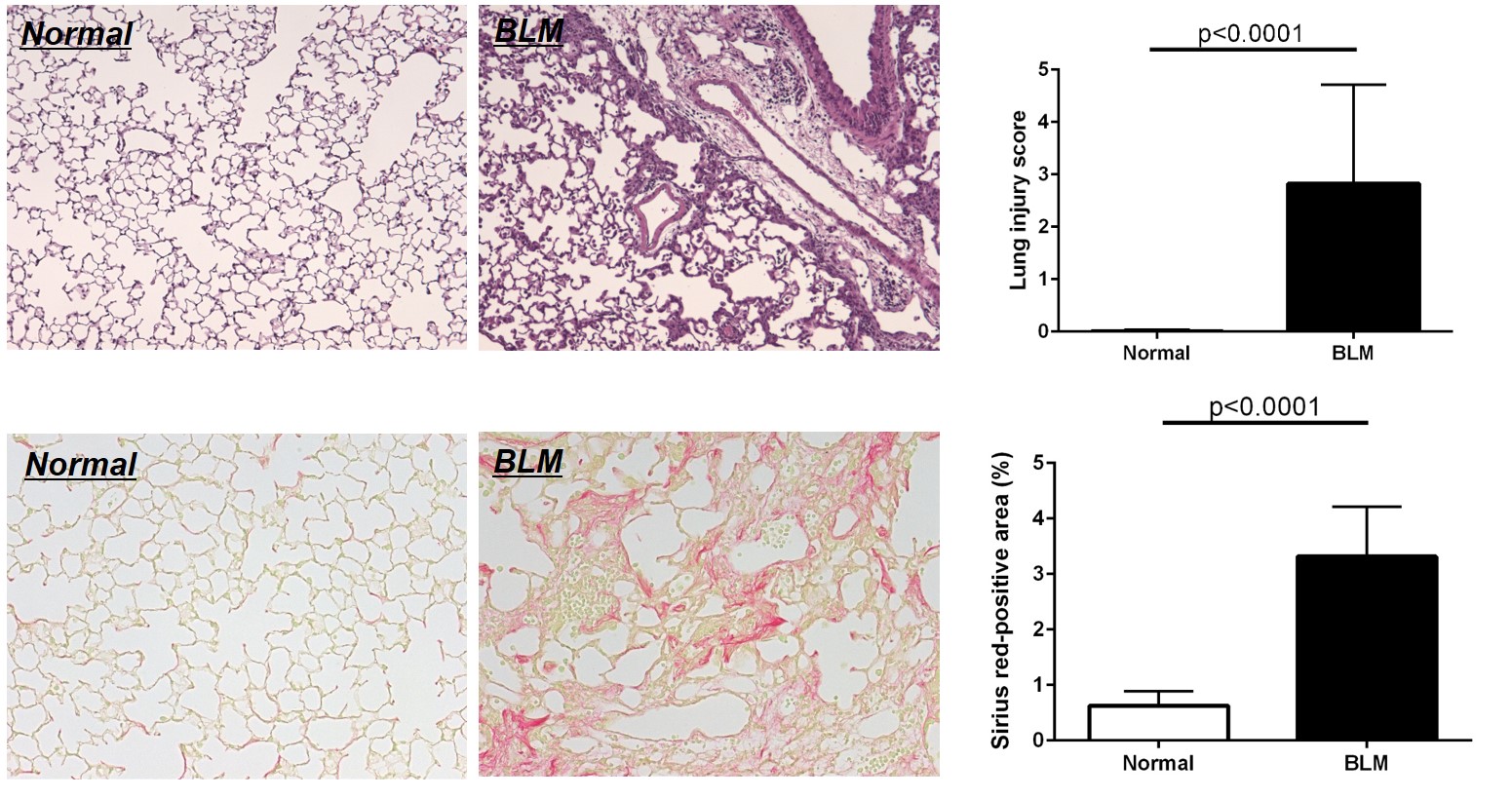Characterization of a lung fibrosis model and its usefulness
We offer the Idiopathic Pulmonary Fibrosis (IPF) model as a potential model for the development of therapeutics for lung fibrosis, and many of our customers have used this model through our introduction of its usefulness.
What is Bleomycin-Induced model for Idiopathic Pulmonary Fibrosis?
Bleomycin is a chemotherapeutic agent used to treat cancer, but one of its side effects is pulmonary toxicity. It’s currently thought that bleomycin damages the lung through oxidative stress, and the damage to the lung triggers an inflammatory and fibrotic response.
Therefore, IPF is one of the best models for drug development studies with pulmonary fibrosis.
How does our model work?
Our model is induced with a single dose of bleomycin, administered intra-tracheally by microsprayer. The local administration of bleomycin causes direct damage to the alveolar epithelial cells, leading to the infiltration of inflammatory cells and the development of interstitial fibrosis.

Advantages of SMC’s platform and our IPF model:
– SMC Expertise with > 10 years of experience in IPF model with robust and reproducible phenotype
– Has been used to evaluate over 90 substances of a variety of modalities.
– Study design based on clients need with two established positive controls for preventative and therapeutic.
– Multiple analysis items such as CT scan, biochemistry, and histological analysis by our highly skilled histopathologist.
